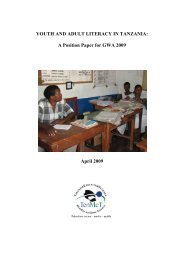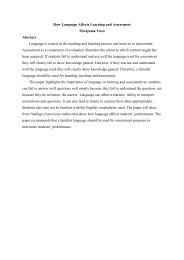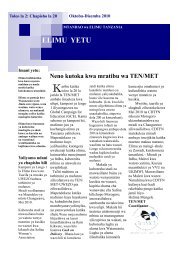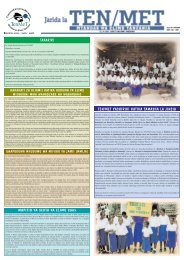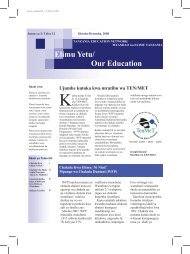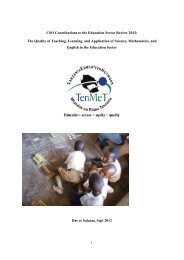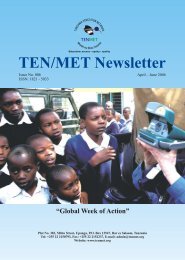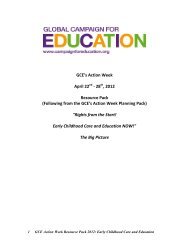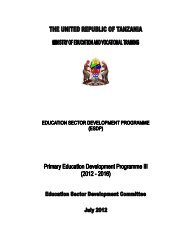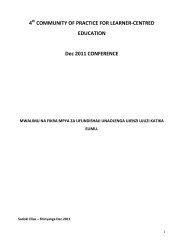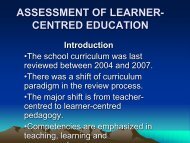A Simple Guide to Working with Finances in Education - Tanzania ...
A Simple Guide to Working with Finances in Education - Tanzania ...
A Simple Guide to Working with Finances in Education - Tanzania ...
Create successful ePaper yourself
Turn your PDF publications into a flip-book with our unique Google optimized e-Paper software.
4.3 Examples of ReformGovernment and donors are aware ofthese problems, and a numberof different processes are meant <strong>to</strong>solve the problem.Unfortunately, not everyoneis aware of the process and theirimplications. Sometimes they have been<strong>in</strong>troduced <strong>with</strong>out enough support for capacitydevelopment. Most of the processes create newopportunities for civil society <strong>to</strong> be <strong>in</strong>volved butwe need also <strong>to</strong> understand how they work.Everyth<strong>in</strong>g is not as neat, tidy and well unders<strong>to</strong>odby all players as it might seem!4.3.1 Public Expenditure ManagementThe overall approach is called Public Expenditure Management (PEM). The overall ideais that government and donors should work <strong>to</strong>gether <strong>to</strong> implement a s<strong>in</strong>gle expenditureprogramme which prioritises the use of all sources of fund<strong>in</strong>g for public expenditure,across all sec<strong>to</strong>rs. This aims <strong>to</strong> be medium term (3-5 years), cover all sources of fund<strong>in</strong>gand l<strong>in</strong>k the money allocated <strong>in</strong> the budget <strong>to</strong> the objectives which have been agreedupon. Donors on their side are meant <strong>to</strong> offer flexible budgetary support <strong>to</strong> an agreedprogramme of policy reforms, rather than <strong>to</strong> <strong>in</strong>dividual ‘pet projects’.This is how it is supposed <strong>to</strong> work.4.3.2 Poverty Reduction StrategyGovernment develops an overall strategy or vision for susta<strong>in</strong>able development, suchas the Poverty Reduction Strategy. This establishes sec<strong>to</strong>ral priorities for governmentand donor spend<strong>in</strong>g. may also redef<strong>in</strong>e the roles which governmentwill play <strong>with</strong><strong>in</strong> each sec<strong>to</strong>r (e.g. privatisation of parastatals). should be based on good diagnostic <strong>in</strong>formation (e.g. Poverty Assessments),and is supposed <strong>to</strong> develop from a participa<strong>to</strong>ry process, <strong>with</strong><strong>in</strong> whichpoor and vulnerable groups have been represented.The idea is <strong>to</strong> reach consensus on a set of achievable longer-term priorities, whichhave enough support <strong>to</strong> enable government <strong>to</strong> shift resources <strong>in</strong><strong>to</strong> areas that will havean impact on those priorities, such as basic social services, or basic <strong>in</strong>frastructure.In theory, PRSPs are just one way of develop<strong>in</strong>g such a strategy. In practice they havebecome a condition for access <strong>to</strong> debt relief under HIPC2, and for further IMF andWorld Bank budgetary support such as the Fund’s PRGF (Poverty Reduction and GrowthFacility). A PRSP has <strong>to</strong> be approved <strong>in</strong> Wash<strong>in</strong>g<strong>to</strong>n by the IMF and the World Bank.18How goodwas thatparticipation?



